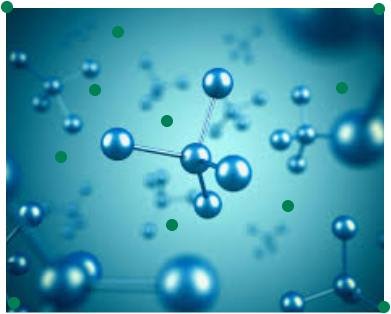What is Oxidation And Reduction Reaction? What is exothermic and endothermic reaction?Learn about the average rate of a reaction.

Following are the types of chemical reaction-
रासायनिक अभिक्रिया के प्रकार निम्नलिखित है-
Addition Reaction-योगात्मक अभिक्रिया
Substitution Reaction- प्रतिस्थापन अभिक्रिया
Irreversible Reaction-अनुत्क्रमणीय अभिक्रिया
Reversible Reaction-उत्क्रमणीय अभिक्रिया
Decomposition Reaction-अपघटन अभिक्रिया
Decomposition Reaction-वियोजन अभिक्रिया
Amphibolic Decomposition reaction-उभय अपघटन अभिक्रिया
Exothermic Reaction-ऊष्माक्षेपी अभिक्रिया
Endothermic Reaction-ऊष्माशोषी अभिक्रिया
Reduction Reaction-अपचयन अभिक्रिया
Oxidation Reaction-उपचयन अभिक्रिया
| Addition Reaction-योगात्मक अभिक्रिया Substitution Reaction- प्रतिस्थापन अभिक्रिया Irreversible Reaction-अनुत्क्रमणीय अभिक्रिया Reversible Reaction-उत्क्रमणीय अभिक्रिया Decomposition Reaction-अपघटन अभिक्रिया Decomposition Reaction-वियोजन अभिक्रिया इन अभिक्रियाओ के बारे में जानने लिए यहां क्लिक करें |
Amphibolic Decomposition reaction(उभय अपघटन अभिक्रिया)
Compound decomposition reaction is a type of chemical reaction. A reaction in which ions or other components of a compound are exchanged is called a decomposition reaction. In this reaction, a single compound is formed from two or more substances or is broken down into simpler substances under suitable conditions.
ex- AgNO3 + NaCl = AgCl + NaNO3
यौगिक अपघटन अभिक्रिया एक प्रकार की रासायनिक अभिक्रिया है। वह अभिक्रिया जिसमें आयनों या यौगिकों के अन्य घटकों का आदान-प्रदान (विनिमय) होता है, अपघटन अभिक्रिया कहलाती है।इस अभिक्रिया में एक ही यौगिक दो या दो से अधिक पदार्थों से बनता है या उपयुक्त परिस्थितियों में सरल पदार्थों में टूट जाता है।
जैसे –
AgNO3 + NaCl = AgCl + NaNO3
और अधिक पढ़ें यहाँ क्लिक करें-click here
घरों में पढ़ाने हेतु अध्यापक बुलाने के लिए अथवा online tutor hire करने के लिए अभी संपर्क करें-9792206168
अथवा विजिट करें- www.gsptutorial.com

Exothermic Reaction(ऊष्माक्षेपी अभिक्रिया)-
If heat is released during a chemical reaction, then that chemical reaction is called exothermic chemical reaction.
The equation of exothermic Chemical reaction can be understood through some of the following facts.
- ΔH=(-)
- ΔE=(-)
- ΔQ=(-)
- Product+heat(Energy)
H2(gas) + Cl2 = 2HCl + 44 cal (25°c)
H2 + 1/2O2 = H2O + 68.4K cal
*यदि किसी chemical reaction के दौरान ऊष्मा निकलती है, तो उस रासायनिक अभिक्रिया को ऊष्माक्षेपी रासायनिक अभिक्रिया कहते हैं।
ऊष्माक्षेपी अभिक्रिया के समीकरण को निम्नलिखित कुछ तथ्यों के माध्यम से समझा जा सकता है।
- ΔH=(-)
- ΔE=(-)
- ΔQ=(-)
- Product+heat(Energy)
H2(gas) + Cl2 = 2HCl + 44 cal (25°c)
H2 + 1/2O2 = H2O + 68.4K cal
Endothermic Reaction(ऊष्माशोषी अभिक्रिया)-
The chemical reaction during which heat is absorbed is called endothermic reaction.
The endothermic reaction can be understood through the following facts-
- reaction → product – energy
- ΔH=(+)
- ΔE=(+)
- ΔQ=(+)
By way of example, it can be written as follows-
H2(g) + I2(g) = 2HI(g) (25°c)
ΔH=(+12k Cal)
वह chemical reaction जिसके दौरान ऊष्मा का अवशोषण होता है, ऊष्माशोषी अभिक्रिया कहलाती है।
ऊष्माशोषी अभिक्रिया को निम्नलिखित तथ्यों के माध्यम से समझा जा सकता है:
- reaction → product – energy
- ΔH=(+)
- ΔE=(+)
- ΔQ=(+)
उदाहरण के माध्यम से इसे कुछ इस प्रकार लिख सकते हैं-
H2(g) + I2(g) = 2HI(g) (25°c)
ΔH=(+12k Cal)
Reduction Reaction(अपचयन अभिक्रिया)-
The reduction of oxygen in a substance during a reaction is called its reduction.
For example, on heating copper powder, its surface turns black. Copper combines with oxygen to form copper oxide.
2Cu + O2 (heat)→ 2CuO
*किसी chemical reaction के दौरान किसी पदार्थ में ऑक्सीजन की कमी को उसका अपचयन कहते हैं।
उदाहरण के लिए तांबे के चूर्ण को गर्म करने पर इसकी सतह काली हो जाती है। कॉपर ऑक्सीजन के साथ मिलकर कॉपर ऑक्साइड बनाता है।
2Cu + O2 (heat)→ 2CuO
Oxidation Reaction(उपचयन अभिक्रिया)-
The increase of oxygen in a substance during a reaction is called its oxidation.
If hydrogen gas is passed over this hot material, the black layer on the surface turns brown again. That is, CuO lacks oxygen.
2Cu + O2 (heat)→ 2CuO
किसी रासायनिक अभिक्रिया के दौरान किसी पदार्थ में ऑक्सीजन की वृद्धि को उसका ऑक्सीकरण कहते हैं।
यदि इस गर्म पदार्थ के ऊपर से हाइड्रोजन गैस प्रवाहित की जाती है, तो सतह की काली परत फिर से भूरी हो जाती है। यानी CuO में ऑक्सीजन की कमी होती है।
2Cu + O2 (heat)→ 2CuO
Classical Concept of Redox Reactions(रेडॉक्स अभिक्रियाओं की पारंपरिक संकल्पना)
According to the initial views, ‘Oxidation is a reaction in which a substance associates with oxygen or an electronegative element or releases hydrogen or an electropositive element, whereas reduction is a reaction in which a substance associates with hydrogen or an electropositive element. emits or releases oxygen or any electronegative element.
A reaction in which electrons are transferred from one reactant to another is called redox reaction.
प्रारंभिक मतों के अनुसार ‘ऑक्सीकरण अथवा उपचयन वह रासायनिक अभिक्रिया है जिसमें कोई पदार्थ ऑक्सीजन अथवा किसी विद्युत ऋणआत्मक तत्व से सहयोग करता है अथवा हाइड्रोजन या किसी विद्युत धनात्मक तत्व को त्यागता है जबकि अपचयन वह अभिक्रिया है जिसमें कोई पदार्थ हाइड्रोजन अथवा किसी विद्युत धनात्मक तत्व से सहयोग करता है या ऑक्सीजन अथवा किसी विद्युत ऋणआत्मक तत्व को त्यागता है’।
ऐसी अभिक्रिया है जिसमें एक अभिकारक से किसी दूसरे अभिकारक को इलेक्ट्रॉनों का स्थानांतरण किया जाता है उसे रेडॉक्स अभिक्रिया कहा जाता है।

रेडॉक्स अभिक्रिया के प्रकार(Type Of Redox Reaction)-
- संयोजन अभिक्रिया(combination reaction)
- अपघटन अभिक्रिया(decomposition reaction)
- विस्थापन अभिक्रिया(displacement reaction)
- विअनुपाती करण अभिक्रिया(disproportionation reaction)
1. संयोजन अभिक्रिया(Combination Reaction)-
A reaction in which two elements of the same or different types cooperate with each other is called a combination reaction.
वह अभिक्रिया जिसमें दो समान या भिन्न प्रकार के तत्व परस्पर सहयोग करते हैं, संयोजन अभिक्रिया कहलाती है।
2.अपघटन अभिक्रिया(decomposition reaction)-
In any chemical reaction, a compound breaks down into two or more compounds, then such a reaction is called a decomposition reaction. This decomposition reaction becomes a redox reaction if at least one of the products obtained is in the elemental state.
किसी भी chemical reaction में कोई यौगिक दो या दो से अधिक यौगिकों में टूट जाता है तो ऐसी अभिक्रिया को अपघटन अभिक्रिया कहते हैं। यह अपघटन प्रतिक्रिया एक रेडॉक्स प्रतिक्रिया बन जाती है यदि प्राप्त उत्पादों में से कम से कम एक मौलिक अवस्था में हो।
3.विस्थापन अभिक्रिया(displacement reaction)-
In a reaction when an atom or ion present in a compound is replaced by an atom or ion of another element, then such a reaction is called displacement reaction.
किसी chemical reaction में जब किसी यौगिक में उपस्थित परमाणु या आयन को किसी अन्य तत्व के परमाणु या आयन द्वारा प्रतिस्थापित किया जाता है तो इस प्रकार की अभिक्रिया विस्थापन अभिक्रिया कहलाती है।
4.विअनुपाती करण अभिक्रिया(disproportionation reaction)-
The reaction in which an element present in its oxidation state is simultaneously oxidized and reduced is called disproportionate reduction reaction.
वह chemical reaction जिसमें ऑक्सीकरण अवस्था में उपस्थित कोई तत्व एक साथ ऑक्सीकृत और अपचयित होता है,विअनुपाती करण अभिक्रिया कहलाती है।
घरों में पढ़ाने हेतु अध्यापक बुलाने के लिए अथवा online tutor hire करने के लिए अभी संपर्क करें-9792206168
अथवा विजिट करें- www.gsptutorial.com

Let’s take a look at some more reactions-
Neutralization Reaction-
In chemistry, a reaction that reacts with an acid and a base to form a salt and water is called a neutralization reaction. With the help of neutralization reaction, it is done to reduce the pain caused by insect bites.
Acid + Base → Salt + Water
2HCl + Mg → Mgcl2 + H2
Use of Neutralization Reaction-
- used for chemical titration
- It is neutralized by using sodium bicarbonate or other neutralizing agent to neutralize the excess acid inside the stomach.
- With the help of neutralization reaction, it is done to reduce the pain caused by insect bites.
- Salt and water are always formed in a neutralization reaction.
Why is magnesium ribbon always cleaned before burning in air?
The top surface of the magnesium ribbon reacts with atmospheric oxygen to form magnesium oxide which is not flammable. Hence it hinders the burning of the ribbon. To overcome this problem, the oxide layer is rubbed off with sandpaper, after which the magnesium ribbon becomes readily combustible.
Why are oily and fatty foods affected by nitrogen?
Foods containing oils and fats get oxidized when exposed to air and become rancid. Their smell and taste have changed slightly from before. To prevent oxidation of foods, oxygen is removed from their packing bags. After it is removed, nitrogen gas or a less reactive gas is added to it so that the compost material does not get oxidized. Due to this, the compost material does not get a rancid smell for a long time and its taste and smell do not change and it remains edible.
आइए एक नजर डालते हैं कुछ और रिएक्शन पर-
उदासीनीकरण अभिक्रिया-
रसायन विज्ञान में, वह chemical reaction जो अम्ल और क्षार के साथ क्रिया करके लवण और जल बनाती है, उदासीनीकरण अभिक्रिया कहलाती है।
अम्ल + छार → लवण + जल
2HCl + Mg → Mgcl2 + H2
न्यूट्रलाइजेशन रिएक्शन का उपयोग-
- रासायनिक अनुमापन के लिए उपयोग किया जाता है।
- पेट के अंदर अतिरिक्त एसिड को बेअसर करने के लिए सोडियम बाइकार्बोनेट या अन्य न्यूट्रलाइजिंग एजेंट का उपयोग करके इसे बेअसर किया जाता है।
- न्यूट्रलाइजेशन रिएक्शन की मदद से ही कीटो के काटने से होने वाले दर्द को कम करने के लिए किया जाता है।
- उदासीनीकरण अभिक्रिया में सदैव लवण तथा जल बनता है।
मैग्नीशियम रिबन को सदैव वायु में जलाने से पहले साफ क्यों किया जाता है?
मैग्नीशियम रिबन का ऊपरी सतह वायुमंडल के ऑक्सीजन से क्रिया करके मैग्निशियम ऑक्साइड में बदल जाता है जो कि जलने योग्य नहीं होता है। इसीलिए यह रिबन के जलने में बाधा उत्पन्न करता है इस समस्या को दूर करने के लिए,ऑक्साइड की परत को रेगमाल से घिसकर साफ कर दिया जाता है इसके बाद मैग्नीशियम रिबन आसानी से जलने योग्य बन जाता है
तेल तथा वसायुक्त खाद्य पदार्थों को नाइट्रोजन से प्रभावित क्यों किया जाता है?
तेल और वसा वाले खाद्य पदार्थ हवा के संपर्क में आने पर ऑक्सीकृत होकर गंधित हो जाते हैं। इनकी महक और स्वाद पहले से थोड़ा बदल जाता है। खाद्य पदार्थों के ऑक्सीकरण को रोकने के लिए, उनके पैकिंग बैग से ऑक्सीजन को हटा दिया जाता है। इसे हटाने के बाद इसमें नाइट्रोजन गैस या कम क्रियाशील गैस मिला दी जाती है ताकि कम्पोस्ट सामग्री ऑक्सीकृत न हो जाए।इससे कम्पोस्ट सामग्री में अधिक समय तक विकृत गंध नहीं आ पाती है और उसका स्वाद और गंध नहीं बदलता और वह खाने योग्य बना रहता है।
रासायनिक अभिक्रिया एवं उनके प्रकार(Chemical reaction and its type)।Part-1 पढने के लिए यहाँ क्लिक करें-click here

The rest of the information of this chapter is given in the next part, the link of which is given below, you can get more information by going to the next article by clicking below.
इस अध्याय की बाकी जानकारी भाग-1 में दी गई है जिसका लिंक नीचे दिया गया है, अधिक जानकारी के लिए आप भाग-1 में नीचे क्लिक करके जा सकते हैं।
इस अध्याय की बाकी जानकारी लेख के भाग-1 में दी जा चुकी है अधिक पढ़ने के लिए-यहां क्लिक करें
